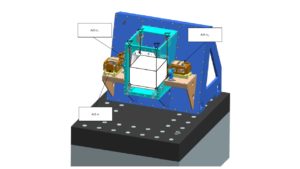Direct drive or Indirect?
What if it is possible to create an indirect-drive actuator with the benefits of a direct drive?
Typical struggles in actuator selection are to balance upsides, such as high force, with the downsides of additional mass, volume and availability. Adding a transmission has its own downsides, such as friction, backlash and hysteresis. But what if a gear ratio can be created with the aid of flexure mechanics, eliminating all these downsides?
How does one deal with the parasitic movements, the own guiding stiffness, dynamics and motor choice in a static use case? Here, a pragmatic implementation is presented of an (in)direct-drive actuator that is self-guided and compliant in multiple passive directions to be used in a steady-state multi-axis kinematically coupled system. Stiffness is dominant and accelerations are low, putting the linear motor outside its comfort zone of merely high-dynamic motion.

Read the full article below:
Mikroniek 2020-4 – Direct or Indirect (002)